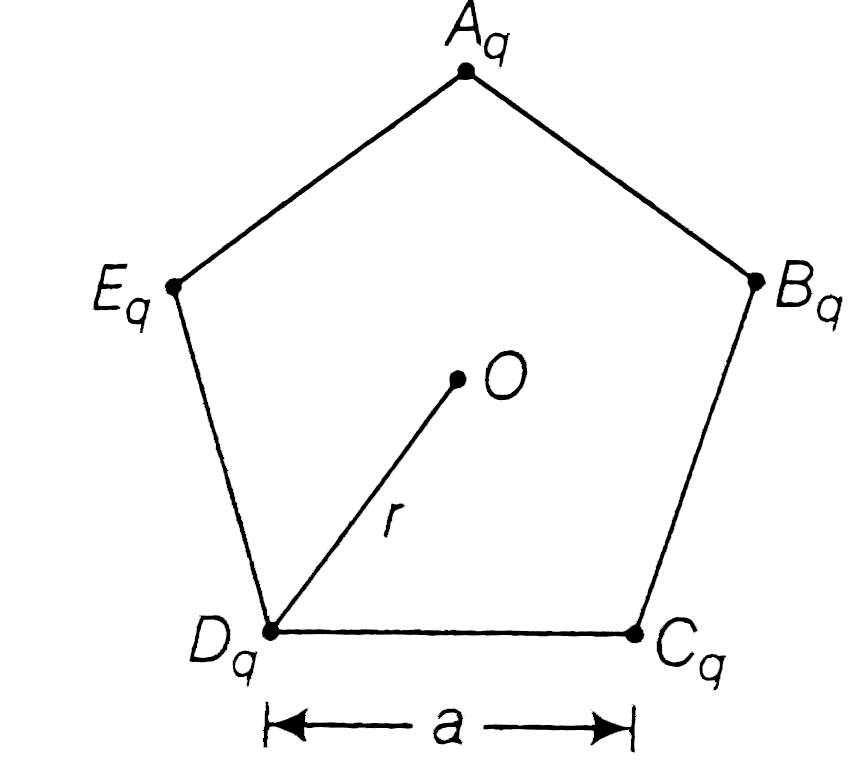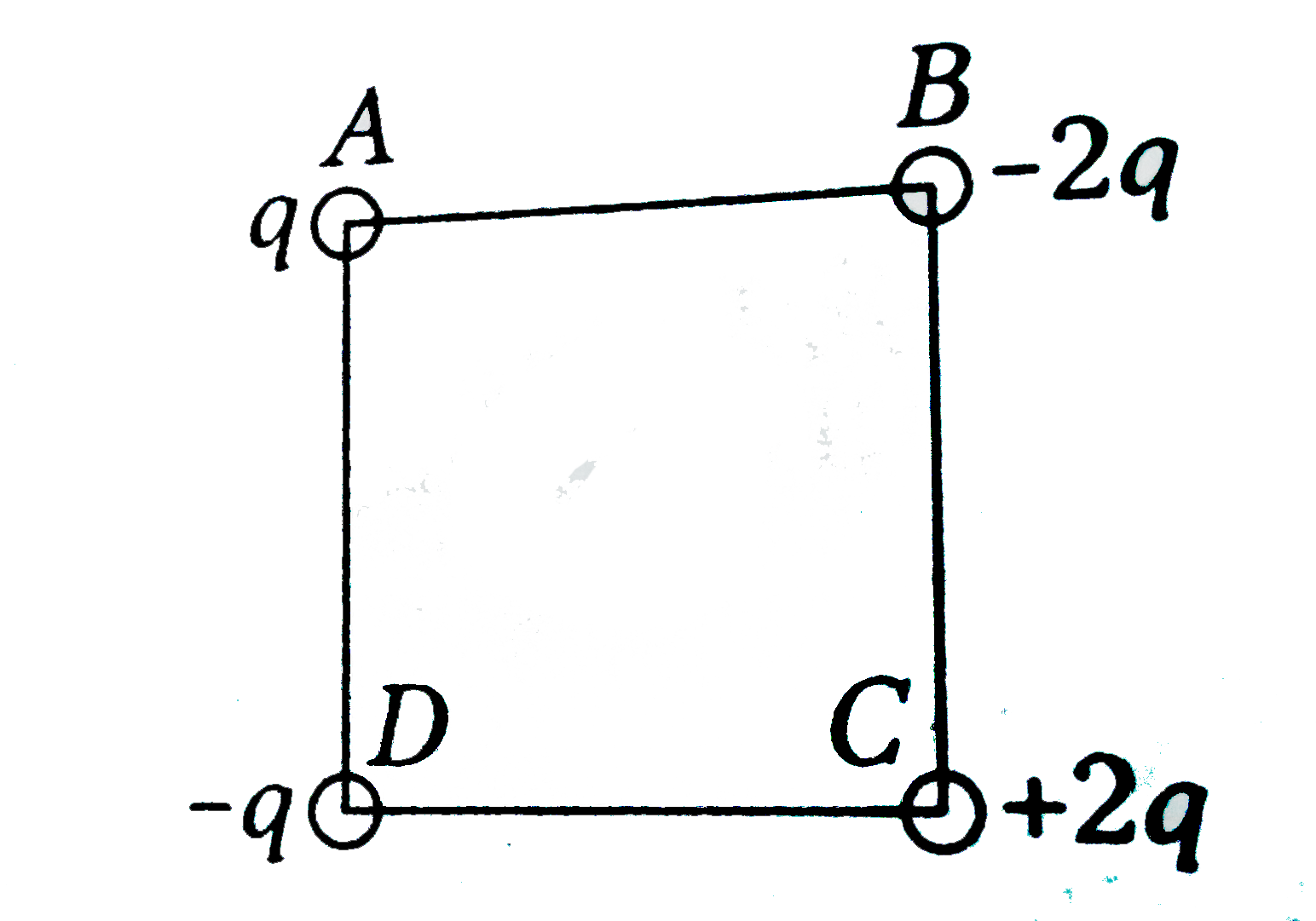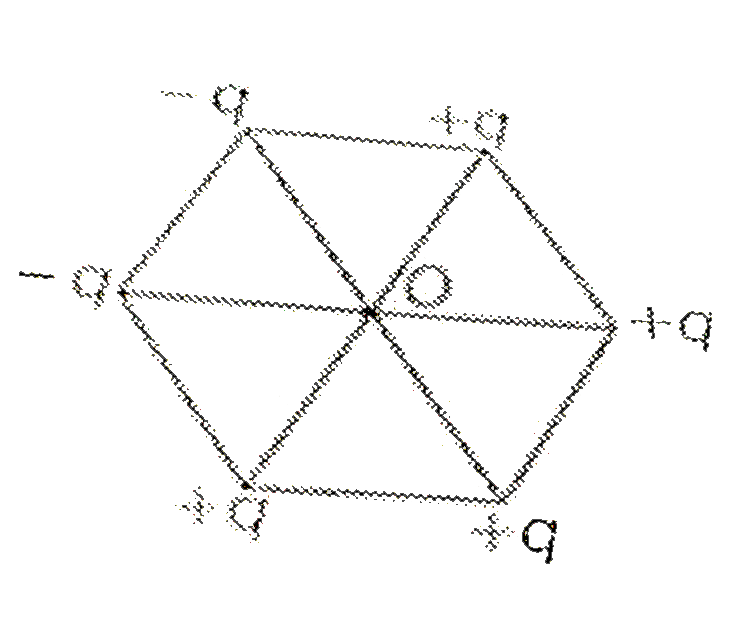Five charges, q each are placed at the corners of a regular pentagon of side a. (Refer the adjoining figure)
(a) (i) What will be the electric field at O, if the centre of the pentagon?
(ii) What will be the electric field at O if the charge from one of the corners (say A) is removed?
(iii) What will be the electric field at O if the charge q at A is replaced by -q?
(b) How would your answer to (a) be affected if pentagon is replaced by n-sided regular polygon with charge q at each of its corners?

(a) (i) In fig, the electric field at 0, the center of pentagon would be zero.
(ii) When charge q from corner A is removed , electric field at 0 would be
E1=q×14π∈0r2 along OA.
(iii) If charge q at A is replaced by −q, it is equivanlent to adding charge −2q at A. Therefore, electric field at 0 would be
E2=2q4π∈0r2 along OA.
(b) When pentagon is replaced by n sides regular polygon with charge q at each of its corners, the electric field at 0 would continue be to zero.
Topper's Solved these Questions
- BOOK - PRADEEPCHAPTER - ELECTROSTATICSEXERCISE - CURIOSITY QUESTIONS4videos
ELECTROSTATICS
- BOOK - PRADEEPCHAPTER - ELECTROSTATICSEXERCISE - VERY SHORT ANSWER QUESTIONS5videos
ELECTROSTATICS
- BOOK - PRADEEPCHAPTER - ELECTROSTATICSEXERCISE - CONCEPTUAL PROBLEMS8videos
ELECTROSTATICS
- BOOK - PRADEEPCHAPTER - ELECTRONIC DEVICESEXERCISE - Fill in the Blanks1videos
ELECTRONIC DEVICES
- BOOK - PRADEEPCHAPTER - MAGNETIC EFFECT OF CURRENT AND MAGNETISMEXERCISE - Competition Focus (Multiple Choice Questions)2videos
MAGNETIC EFFECT OF CURRENT AND MAGNETISM
Similar Questions
Five charges, q each are placed at the corners of a regular pentagon of side a. (Refer the adjoining figure)
(a) (i) What will be the electric field at O, if the centre of the pentagon?
(ii) What will be the electric field at O if the charge from one of the corners (say A) is removed?
(iii) What will be the electric field at O if the charge q at A is replaced by -q?
(b) How would your answer to (a) be affected if pentagon is replaced by n-sided regular polygon with charge q at each of its corners?
 View Solution
View SolutionFive charges , q each are placed at the corners of a regular pentagon of side.

(a) (i) What will be the electric field at 0, the centre of the pentagon?
(ii) What will be the electric field at 0 if the charge from one of the corners (say A) is removed?
(iii). What will be the electric field at 0 if the pentagon is replaced by n-sided regular polygon with charge q at each of its corner?View Solution
Knowledge Check
- Question 1 - Select One
In question number 45, what will be the electric field at O if the charge q at A is replaced by -q?
Aq4πε0r2 along OBB2q4πε0r2 along OAC4q4πε0r2 along OCDzero - Question 2 - Select One
In question number 45, what will be the electric field at centre O, if the charge from one of the corners (say A) is removed?
Aq4πε0r2 along OAB2q4πε0r2 along OBCq24πε0r2 along OCD2q4πε0r2 along OA - Question 3 - Select One
Five point charge (+q each) are placed at the five vertices of a regular hexagon of side 2a.what is the magnitude of the net electric field at the centre of the hexazon?
A14πε0qa2Bq16πε0a2C√2q4πε0a2D5q16πε0a2
Five equal charges each of value q are placed at the corners of a regular pentagon of side a. The electric field at the centre of the pentagon is
 View Solution
View SolutionFour charges are placed at the corners of a square of side 10 cm as shown in figure. If q is 1μC, then what will be electric field intensity at the centre of the square?
 View Solution
View SolutionSix point charges are arrange at the vertices of a regular hexagon of side length a (shown in figure).

Find the magnitude of electric field at the centre of regular hexagon.View SolutionFive point charge (+q each) are placed at the five vertices of a regular hexagon of side 2a.what is the magnitude of the net electric field at the centre of the hexazon?
View SolutionFive identical point charges +Q are placed at the five corners of a regular hexagon of edge length a. One corner is empty. Electric field intensity at the centre of the hexagon is
View Solution

